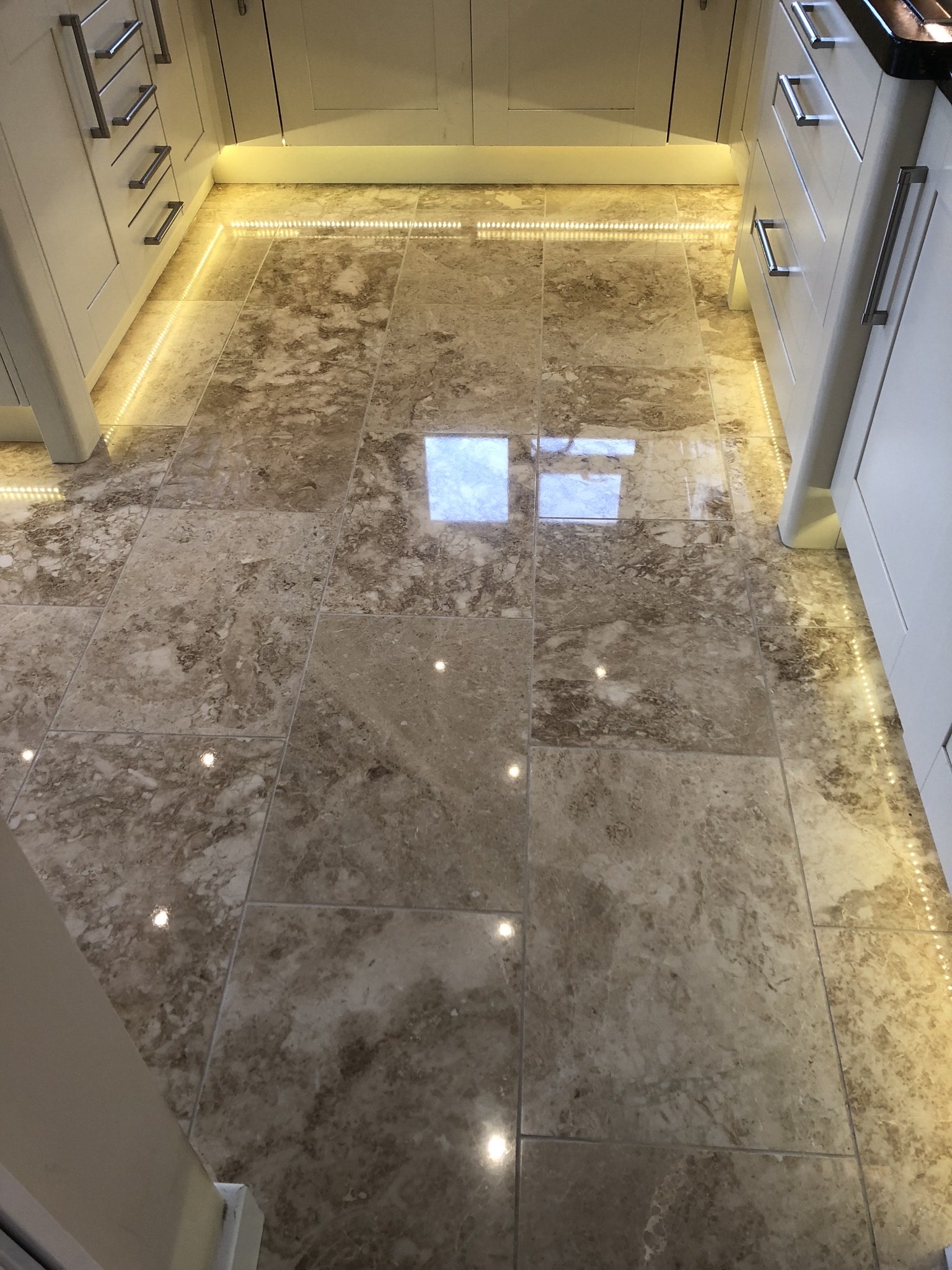 |
 |
I arranged to survey the floor and explained to the client how I intended to restore the appearance of the Marble to how it should look. I demonstrated the process on a small test area so they could get an idea of the result and explained that the floor could look even better than the day it was installed. Tile Doctor has developed a system called burnishing for natural stone floors which involve the application of a set of diamond pads which are used in sequence to clean and restore the polish to the stone. My quote was accepted, and a date set for the work to begin which should take two days.
Cleaning and Polishing a Marble Tiled Floor
I arrived on the agreed date and started by sealing up the bases of the kitchen kickboards and skirting with silicone to protect against any damage from water ingress. I then vacuumed the floor to remove any debris and grit. Tile Doctor Stone Soap was then worked into the floor with the first of a set of diamond encrusted Burnishing Pads. The first pad is a coarse 400-grit pad and is run over each Marble tile four times. The floor is then rinsed with water and the soil extracted with a wet vacuum. This process was then repeated with an 800-grit, 1500-grit and then finally a 3000-grit pad which is applied dry with only a little water spayed onto the floor. Tile Doctor Stone Soap is a stone cleaning product designed for maintaining the patina on polished stone. Additionally, it has a sealer friendly pH Neutral formula which is ideal for floors like these. Many floor cleaning products you find in supermarkets are too harsh for use on natural stone and can cause damage over time (always read the label).Sealing a Polished Marble Floor
Once the burnishing was complete the floor needed to be sealed to protect its’ final finish. Tile Doctor have a whole range of sealing products available but for a really durable shiny finish on Marble I recommend the application of Tile Doctor Shine Powder. This is a crystallising powder that provides a very high shine and tough durable finish, it’s worked into the stone using a white pad fitted to a rotary machine.
My client was absolutely delighted with the result and agreed the floor had never looked so good and lived up to the high standard I told them they could expect. For aftercare I recommended the use of Tile Doctor Stone Soap which will keep the floor clean and help maintain the deep patina that I had built-up on the Marble tiles.
 |
 |
Source: Marble Tile Cleaning and Restoration Service in Worcestershire